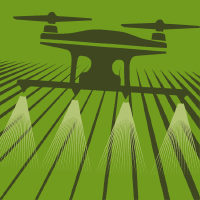Topic Editors


Current Research on Intelligent Equipment for Agriculture
Topic Information
Dear Colleagues,
Intelligent agricultural machinery and equipment play an increasingly critical role in improving agricultural production and efficiency. Thanks to the advances in sensors, the internet of things (IoT), robotics, and artificial intelligence (AI), intelligent agricultural equipment integrates information perception, end‒edge‒cloud computing systems, and AI-enabled decision making and control to allow autonomous operations. Examples of intelligent agricultural equipment include autonomous tractors, robotic farming devices, agricultural drones, and smart sensor systems. Intelligent agricultural machinery and equipment are expected to promote innovations and practices in autonomous agricultural machinery operation, accurate data acquisition, smart decision making, operation quality and efficiency, and improved agricultural resilience and sustainability. We are pleased to announce a Topic entitled “Current Research on Intelligent Equipment for Agriculture” to showcase cutting-edge technologies and state-of-the-art research around core technological innovations. The topics of interest include, but are not limited to, the following:
(1) Intelligent perception for operational environment and autonomous navigation.
(2) Intelligent disease, pest, and weed identification and management.
(3) Smart sensors and IoT for agricultural machinery monitoring.
(4) Automatic control methods and systems for agricultural machinery operation.
(5) Intelligent farm equipment (e.g., soil preparation, planting, application, weeding, harvesting, transportation, and nondestructive testing).
(6) Agricultural robot technology for crop and livestock management.
Dr. Changyuan Zhai
Prof. Dr. Ning Wang
Dr. Jianfeng Zhou
Topic Editors
Keywords
- precision agriculture
- big data analytics
- agricultural robot
- intelligent perception
- internet of things
- decision making
- artificial intelligence
- precision livestock farming
Participating Journals
| Journal Name | Impact Factor | CiteScore | Launched Year | First Decision (median) | APC | |
|---|---|---|---|---|---|---|

Agriculture
|
3.6 | 3.6 | 2011 | 17.7 Days | CHF 2600 | Submit |

AgriEngineering
|
2.8 | 4.6 | 2019 | 25.8 Days | CHF 1600 | Submit |

Agronomy
|
3.7 | 5.2 | 2011 | 15.8 Days | CHF 2600 | Submit |

MDPI Topics is cooperating with Preprints.org and has built a direct connection between MDPI journals and Preprints.org. Authors are encouraged to enjoy the benefits by posting a preprint at Preprints.org prior to publication:
- Immediately share your ideas ahead of publication and establish your research priority;
- Protect your idea from being stolen with this time-stamped preprint article;
- Enhance the exposure and impact of your research;
- Receive feedback from your peers in advance;
- Have it indexed in Web of Science (Preprint Citation Index), Google Scholar, Crossref, SHARE, PrePubMed, Scilit and Europe PMC.


